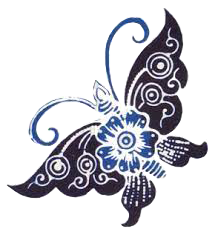Batik Ciprat, Ancestral Heritage 'Preserved' by People with Disabilities
The name is Ciprat batik. As the name suggests, this batik is made by splashing a solution of wax.
Batik is recognized as a world cultural heritage originating from Indonesia. Over time, many batik craftsmen have innovated. One of them is Ciprat batik. This batik is unique, especially those made by people with disabilities.
Since ancient times, batik has been made from generation to generation until now. There are more than three thousand classic or traditional batik patterns in Indonesia. Of course, it is adjusted to the conditions and potential of each region.
On the island of Java, there are various types of batik. Like Pekalongan batik with its coastal style which is still strongly influenced by Chinese and Arabic styles. Then Solo batik has an inland style with natural colors.
Then Cirebon batik has a style almost the same as Pekalongan batik but has different color variations. Not to mention Jogja batik, Semarang batik, Lasem batik, Madura batik, Baduy batik and so on.
Just to remind you, batik has been recognized worldwide as an original Indonesian creation and work. Batik has had a commemoration day since 2009, which is October 2.
From the wealth of Indonesian batik, this type of batik is different and unique. Its name is Ciprat batik. As the name implies, the way to make this batik is by splashing the wax solution (material for drawing batik cloth).
The wax is splashed using hands, spoons, and brushes or sticks. So that in its manufacture it is done with the jumputan technique and the colet or brush technique.
The difference between ciprat batik and other batik is its striking color.
In addition, the motif is different from batik in general. Namely, spots. This batik is made from primisima cotton cloth measuring 1.15 x 2.25 meters. Like batik in general, the batik making process also uses remasol, coloring with waterglass, then boiling, and drying.
This Ciprat batik comes from Semarang. Precisely Jalan Elang Raya No. 2 Mangunharjo, Tembalang, Semarang City. In its development, Ciprat batik was given names like the names of areas in Semarang. For example, Old Town, Sigar Bencah, Lawang Sewu, Pecinan, and so on.
Creativity of People with Disabilities
Who would have thought that these beautiful and pretty batiks were made by people with disabilities. The batik is the original work of children with severe mental retardation, hearing impairment, speech impairment, autism, and Down syndrome. In making batik, they do not use a definite pattern.
All motifs are adjusted to the wishes of each child. So, the results of the batik will be different in each creation.
This batik began to be formed in 2011. At that time, a skills teacher at SLBN Semarang was training students with severe mental retardation to make batik. After trying many times, the students had difficulty making batik using a canting.
Finally, they splashed and dripped the wax solution onto the cloth randomly. So their batik breaks through the rules of making batik that is drawn using canting.
Until now, batik production is still done by hand by students of SLBN Semarang. This batik is given a simple brand, namely ESELBENS Poenya which means SLBN Semarang has.
Not only in Semarang, this batik has spread to various regions in Indonesia. Such as Kalimantan, Jakarta, Papua, Aceh, and other areas. In fact, groups of tourists from Europe and Asia who visit, often buy Ciprat batik.
Now, Ciprat batik production is carried out in many areas. Starting from Semarang, it has become an inspiration for people with disabilities to create works. Among others, Jogjakarta, Lampung, South Sumatra, and other areas. The result is many interesting motifs that are in accordance with the characteristics of each region.

